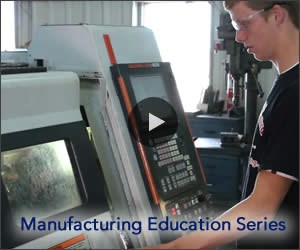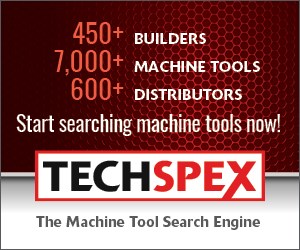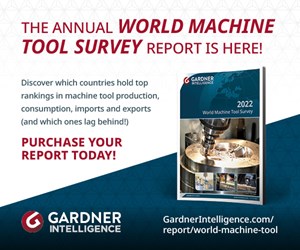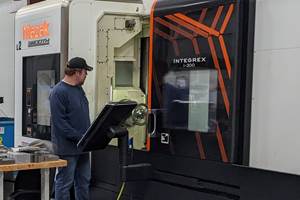Job Shop ERP: What Should You Look For?
An independent ERP advisor offers seven points to consider when evaluating an ERP system’s functions and features.
Share




The most important thing to know when you are investing in an enterprise resource planning (ERP) system is what objective you hope to achieve. The ERP system can be a means to achieve key business outcomes such as improved customer service, reduced lead time, improved quality, reduced asset turns, higher productivity and improved, more timely decision making. For job shops, one distinctive factor is that these companies don’t typically have dedicated IT support on staff. This makes it all the more important for the system chosen to be a good organizational match.
With that in mind, here are seven points to consider when evaluating a new ERP system’s functions and features:
1. Integration. Look for ERP features that remove manual processes and duplicate data entry. The system should let data flow seamlessly, integrating information to get quotes out as quickly and accurately as possible. Consider solutions that integrate release schedules, assemblies, job scheduling and more to avoid machine bottlenecks and increase job throughput. Be sure shipping integrates seamlessly so customers can track their orders.
2. Maintenance and Scheduling. Automated features should help your company schedule maintenance. Tracking maintenance puts companies in a better position to reduce the risk of lost production and costly downtime. For instance, can the software set triggers and track maintenance requirements within the production schedule? Many companies find improved machine uptime from scheduled maintenance cycles. Automating this area helps improve quality, shrink maintenance costs, and reduce the need for emergency repairs. Be sure there is a high level of integration between maintenance and production schedules.
3. Parts Tracking and Job Tracking. How well does the system improve visibility throughout the shop? Is it easy to see exactly where a given job is throughout the production cycle? The system should provide production tracking, including both detailed and summarized reports. Data is more valuable when it is highly integrated with material management, shop operations, and scheduling. Be sure the system provides the ability to track raw material and components from cradle to grave.
4. Document Management. Many organizations experience bottlenecks when handling documents, work instructions, blueprints/drawings and quality reports. When evaluating ERP, make sure document management, complete with revision control, is fully integrated into the system. Automating approvals and revisions helps companies comply with quality standards. The system should provide check-in/check-out capabilities, ease of sharing, and the ability to attach documents to jobs and have them carry through from beginning to end. Again, document management features have a high potential for ROI when report tracking and management are handled seamlessly within the ERP system.
5. Material Control and Inventory Management. Seek out features that help improve inventory costing. Do the systems being considered automate the physical flow of materials and seamlessly manage the procure-to-pay business cycle? Companies benefit when they improve purchasing management, including requirements identification. Look for increased visibility into the flow of purchase orders, contract management, and invoice handling.
6. Data Collection. Many shops capture data on paper and then “hand-jam” the data into a legacy ERP system or stand-alone spreadsheets. And some shops do not capture production data, material transactions or other such information at all. By adding shopfloor data collection kiosks, mobile devices or bar coding, key data is updated in real time and is more accurate. Providing valuable information to managers and executives allows for better business decisions, and visibility is improved throughout the shop.
7. Business Intelligence. The ERP system should offer business intelligence features that help users “take action” so relevant shop floor and production data gets in the hands of those able to make improved business decisions. Does the system visually aggregate data into displays that use colors, gages, graphs and other visual representations to display trends, averages, unusual results, compliance with goals or expectations? Shopfloor workers should be able to easily access real-time data visualizations with pre-built performance indicators, including customized displays fitting the needs of functional areas.
About the author: Dennis Gilhooley is a senior consultant with Ultra Consultants, a firm advising manufacturers of various sizes on ERP implementation. He has more than 15 years of experience in business process improvement, management consulting, ERP implementation and lean manufacturing.
Related Content
Cutting Part Programming Times Through AI
CAM Assist cuts repetition from part programming — early users say it cuts tribal knowledge and could be a useful tool for training new programmers.
Read MoreCan AI Replace Programmers? Writers Face a Similar Question
The answer is the same in both cases. Artificial intelligence performs sophisticated tasks, but falls short of delivering on the fullness of what the work entails.
Read MoreOrthopedic Event Discusses Manufacturing Strategies
At the seminar, representatives from multiple companies discussed strategies for making orthopedic devices accurately and efficiently.
Read More5 Tips for Running a Profitable Aerospace Shop
Aerospace machining is a demanding and competitive sector of manufacturing, but this shop demonstrates five ways to find aerospace success.
Read MoreRead Next
Setting Up the Building Blocks for a Digital Factory
Woodward Inc. spent over a year developing an API to connect machines to its digital factory. Caron Engineering’s MiConnect has cut most of this process while also granting the shop greater access to machine information.
Read MoreRegistration Now Open for the Precision Machining Technology Show (PMTS) 2025
The precision machining industry’s premier event returns to Cleveland, OH, April 1-3.
Read MoreWhy We Ask Machine Shop Leaders to Speak at TASC – The Automated Shop Conference
TASC is our industry’s premier peer-to-peer automation stage where America’s shop leaders refine the art of metalworking and CNC machining. For conference speakers, it's also an opportunity to showcase your skills and gain exposure for your business. Here are five why stepping into the spotlight at TASC could be your smartest move toward elevating your shop.
Read More






























